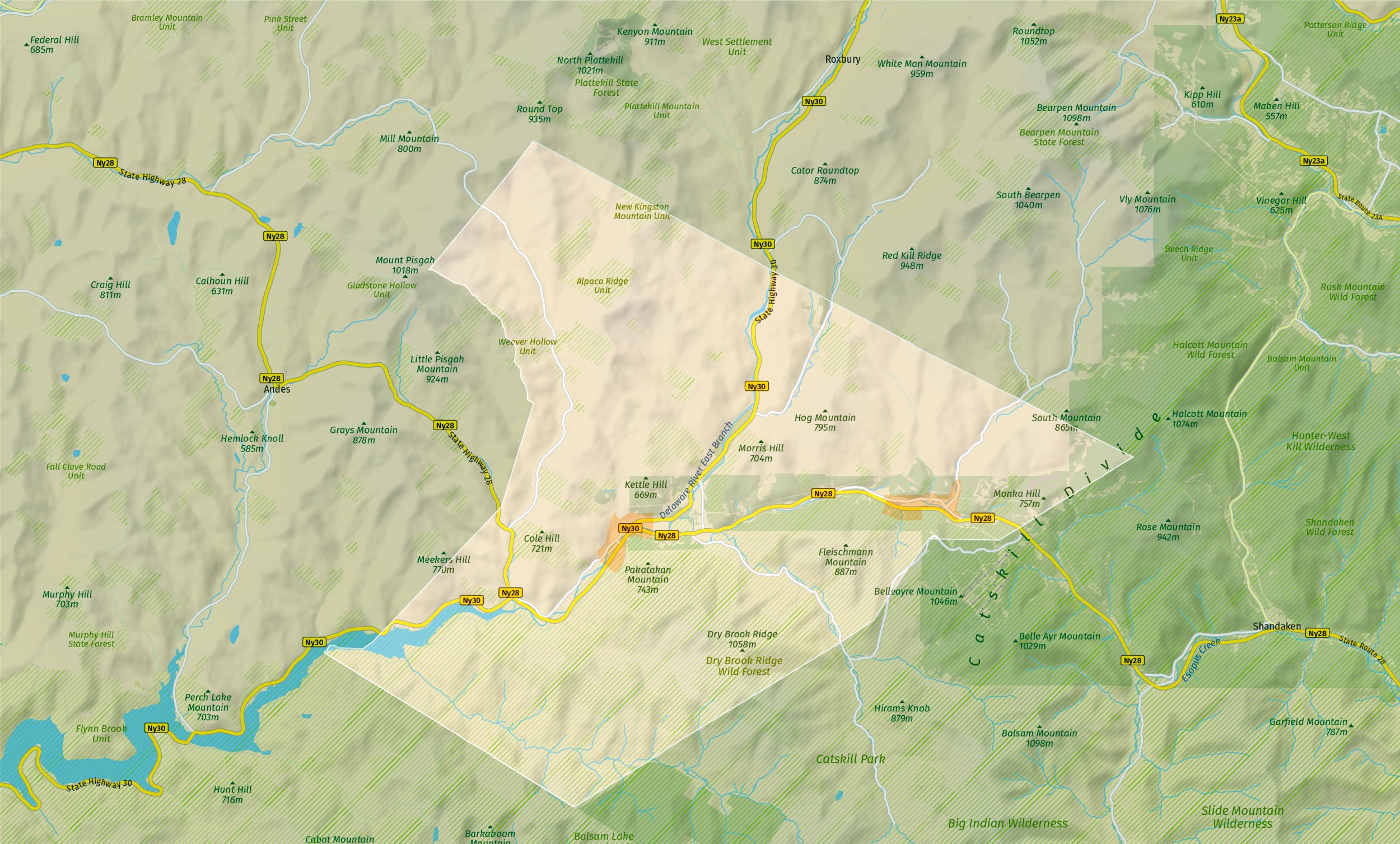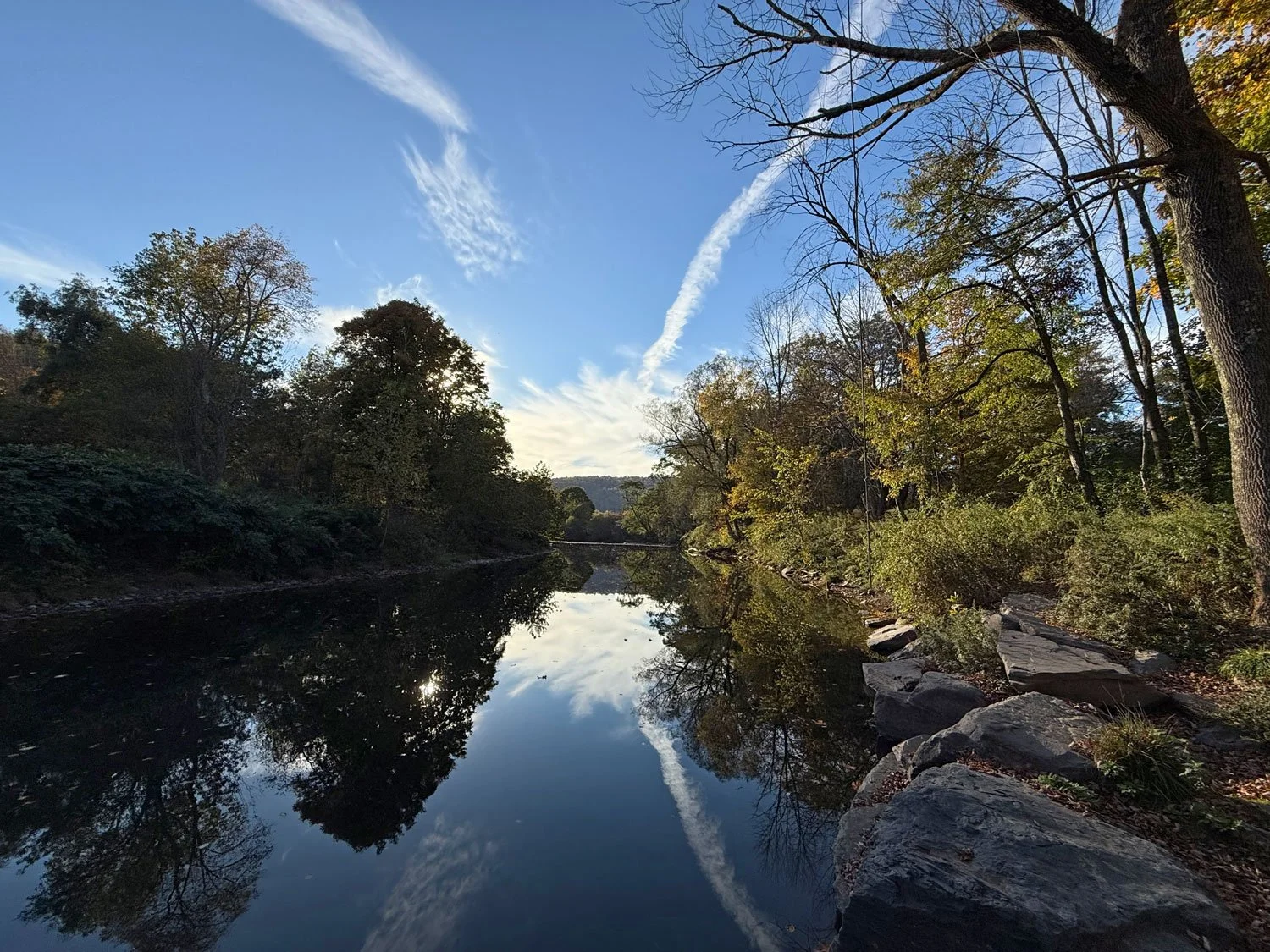
Middletown
Photo: Alex Waters
Middletown, originally home to the Munsee Lenape people, was formed in 1789 from parts of Rochester and Woodstock, before Delaware County was established. Spanning 97.3 square miles, it had a population of 3,336 as of the 2000 census, with 1,672 households and 1,034 families.
The Catskills Scenic Byway runs along Route 28 through the villages of Fleischmanns, Arkville, and Margaretville. A portion of the town is located within the Catskill Park, part of the state’s Forest Preserve. Middletown is also situated in the Delaware River Watershed, with the East Branch of the Delaware River flowing through it to the Pepacton Reservoir, the largest in New York City’s water supply system.
Margaretville
Photo: Jessica Vecchione
In 1763 three Dutch families settled in the shadow of Pakatakan Mountain. The village was named in 1850 after Margaret Lewis, the granddaughter of Chancellor Robert Livingston, and was incorporated in 1875.
During the first half of the 20th century, Margaretville became a key center for the cauliflower-growing industry in the Catskills. A notable landmark, the Galli Curci Theater, was built in 1921 by Catskill Mountain News publisher Clarke Sanford and named after opera star Amelita Galli Curci, who performed at its opening.
In 1939, Margaretville Central School replaced several smaller local schools, and the former District 10 School, a one-room stone schoolhouse, survived demolition during the Pepacton Reservoir's construction in 1954.
The municipality is 0.71 square miles and is home to approximately 500 people.
Fleischmanns
Photo: Jessica Vecchione
Fleischmanns, originally named Griffin Corners in honor of prominent lawyer Matthew Griffin, has a rich history tied to the expansion of the Ulster & Delaware Railroad in the 1870s, which made the area accessible to visitors from New York City and beyond. The transformation of the community began when the wealthy Fleischmann family, known for their success in yeast and distilling, purchased land above the railroad. There, they constructed an impressive family compound featuring five mansions, a large riding arena, and various amenities.
From 1890 to 1912, the community was known by both names—Griffin Corners and Fleischmann—until it officially incorporated as Fleischmanns in 1913. As the late 19th century progressed, the area flourished as a summer boarding colony, attracting many seasonal visitors. It is noted that in the 1940s, although the permanent population was around 500, the number swelled to approximately 10,000 during the busy Fourth of July holiday.
Over time, the economy of Fleischmanns shifted towards that of a second homeowner community. Today's Fleischmanns is characterized by its diverse population, which includes Mexican- and Asian-Americans, Central and South American immigrants, as well as Orthodox Jewish residents, reflecting the area's evolving social fabric.
Arkville
Photo: Jessica Vecchione
Arkville, a hamlet just a mile east of the Village of Margaretville along NYS Route 28, is one of the earliest commercial centers in Middletown. It is built on or near the site of a Munsee village called Pakatagkan.
The hamlet's growth was significantly influenced by the arrival of the Ulster & Delaware Railroad in 1871, with the first train stopping at the Arkville U&D station on October 24. While regular passenger service ceased in 1954, the railroad has since been transformed into a tourist attraction.
Arkville is home to The Catskill Center for Conservation and Development, The Catskill Recreation Center, and the Water Discovery Center, promoting community engagement and conservation efforts. Additionally, the hamlet has its own fire district, ensuring safety for residents and visitors.
New Kingston
New Kingston Presbyterian Church
New Kingston is a historic hamlet in the Catskills, established by descendants of the "Kingston Sufferers" after the British burned Kingston in 1777. Chancellor Robert Livingston donated 5,000 acres to support those who lost their homes.
The area was once a hub for commercial cauliflower production, lasting a century. Today, it hosts a few remaining dairy farms, including one run by the Elliott family for over 200 years.
Recognized for its significance, New Kingston is listed on both the State and National Registers of Historic Places. Community spirit thrives through events like the revived Whoop-De-Doo celebration, which began in the 1970s, highlighting the area's rich heritage and community ties.
Halcottsville
Photo: James Kelly
Halcottsville is a historic hamlet named after John Halcott, a Revolutionary War soldier from Delaware County. The Kelly family arrived around the same time, with David Kelly constructing a wooden dam that formed Lake Wawaka, providing water power for a grist mill.
The opening of the railroad in 1871 boosted commerce and recreation in Halcottsville, which once flourished with a creamery, ice house, mill, general stores, churches, and more. A notable landmark, the Kelly Round Barn, built in 1899, was reconstructed in 1988 and has hosted the Pakatakan Farmers Market since 1996, continuing the community's agricultural legacy.






